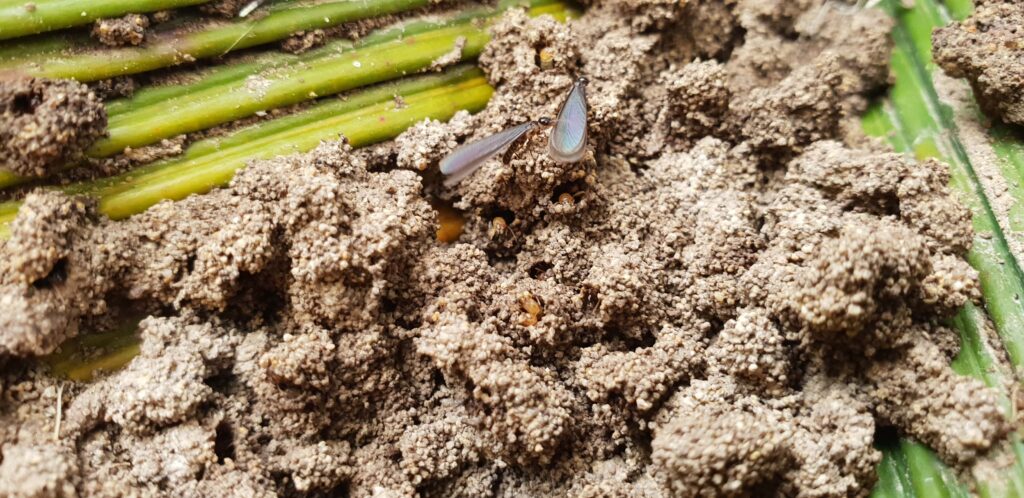8 Steps to Termite Control

Termites are in every suburb of the Gold Coast. We used to have a higher number of calls from Clients in particular suburbs but that is not the case anymore. More and more homes on the Gold Coast are being attacked. If you haven’t had them in your home or garden, DO NOT expect you will never get termites.
1 in 3 homes have termites and they cause more structural damage per year than ALL natural disasters put together. The estimated cost of damage per year to Australian homes due to termites is $780 million.
Protect your biggest investment by following these 8 steps to controlling termites.
Step 1
Keep the perimeter of your home free from vegetation. Trees, shrubs, garden beds, any tree stumps or plants up against the external walls of your home create an easy concealed entry point for termites. Make sure you have a clear pathway between your home and any garden beds.

Clear vegetation away from the external walls of your home.
Step 2
Do not pile mulch high against the side of your home as it increases the risk of termites entering undetected. Subterranean (termites that live under ground) termites thrive in warm, moist environments and mulch provides the perfect food source. Cypress Pine is the best choice for mulch as it is a natural repellant for some species of termites, however they will eat through it to get to a timber they love so like your garden beds it is better to keep it at a reasonable distance.
Do not pile mulch too high against the external walls of your home. It creates the perfect
environment for foraging termites.
Step 3
Fix all external water leaks. Air conditioning units, hot water systems, taps, water tanks, broken downpipes; any pipes that release water alongside or near to the external walls of your home is an attractant for termites. Make sure any water tank overflow and pipes are connected to a drain or piped several meters away from the dwelling and repair any broken downpipes.
Make sure water tanks overflow & drainage pipes are connected to a drain or piped away from the dwelling & broken down-pipes are repaired.
Step 4
As with trees and shrubs, remove any obstructions eg sheds, timber debris, bricks, water tanks, stored goods, pool pumps etc that are against the external walls of your home as they inhibit a full view of your home and potential termite damage or entry paths may be missed.
Water tanks, hot water systems, air-conditioning units & stored goods can inhibit a full view of the external walls your home.
Step 5
Fix any drainage issues or low lying areas around your home. If after heavy rain you find there is a lot of mud or water pooling close to your home then discuss with a builder or plumber your options on how to have this have this fixed. Termites thrive in hot, moist conditions.


Poor drainage and low lying areas around your home increases the likelihood of termite attack.
Step 6
Termites are known for tracking into homes through an internal leak. If you know you have a leaking shower or toilet for example, have it fixed. Our Termite Inspectors have a moisture meter and will be able to detect any high moisture in these areas so it is worth having an inspection done every year to find out if there are any indicators of an internal leak.
Leaking Pipes create an area conducive to termites
Step 7
Annual Termite Inspections are a must. Book a thorough internal and external termite inspection with one of our licenced Termite Inspector to check for any signs of termites. If they have any concerns, get them to point them out on-site, they will also follow up with a fully insured pest inspection report. An annual termite inspection costs around $200.



